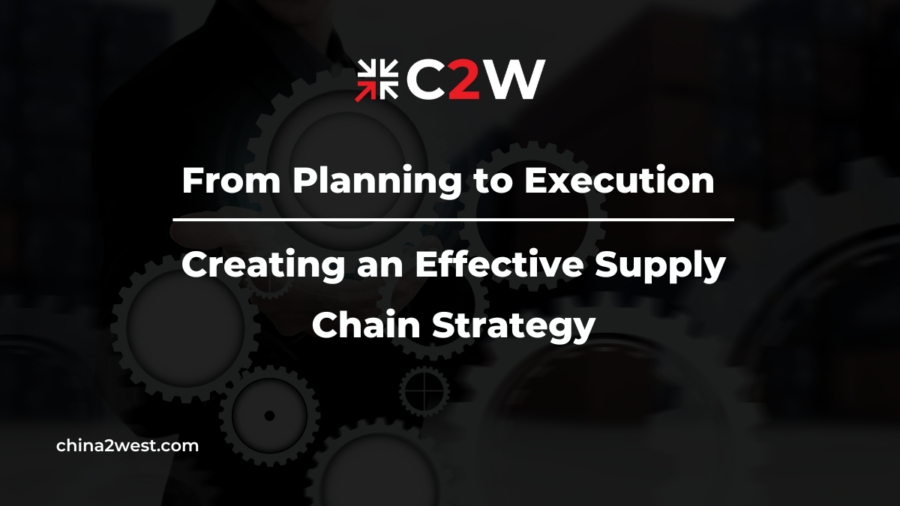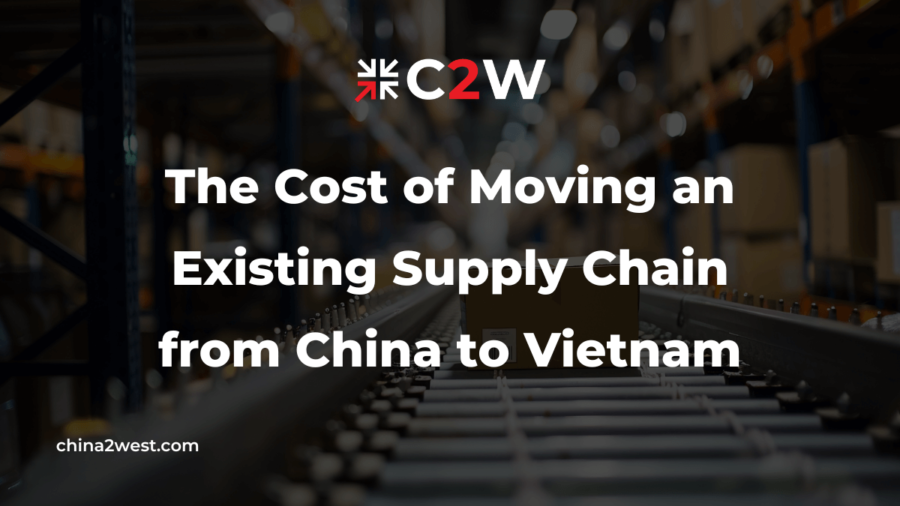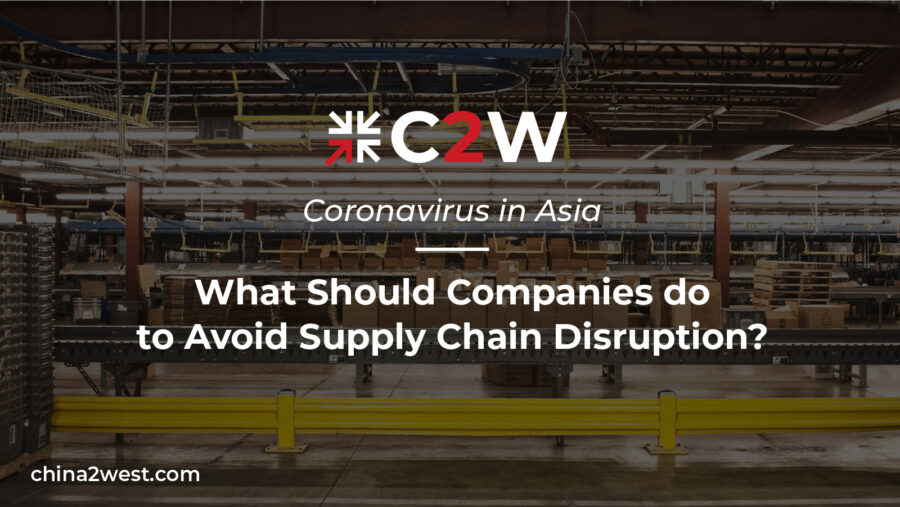In today’s global market, efficient supply chain management is key to business success. However, developing a successful strategy for the supply chain can be a challenging undertaking. With the complexity of modern supply chains, particularly in countries such as China, it is essential to have a comprehensive plan that covers all of the key components.
In this blog post, we will explore the various factors involved in creating a successful supply chain strategy, from planning and forecasting to execution and review. We will also discuss the various challenges that organizations face when developing supply chain strategies in the Chinese market. With this information, you will gain valuable insight into how to create a sustainable and successful supply chain strategy. Let’s dive in!
Importance of a Sustainable Supply Chain Strategy
In today’s fast-paced global marketplace, a sustainable supply chain strategy is more important than ever before.
But why is it so crucial?
This is because a sustainable supply chain strategy ensures that your business can operate efficiently and effectively while minimizing its impact on the environment and society.
By implementing sustainable practices throughout your supply chain, you can reduce waste, conserve resources, and lower your carbon footprint. This not only benefits the planet, but it can also save your business money in the long run.
Additionally, a sustainable supply chain strategy helps to build trust and credibility with consumers who are increasingly conscious of the social and environmental impact of the products they purchase.
Furthermore, a sustainable supply chain strategy can help your business navigate the ever-changing regulatory landscape. As governments around the world continue to tighten regulations on issues such as carbon emissions and waste management, having a robust and sustainable supply chain strategy in place will ensure your business stays ahead of the curve.
Assess Your Current Supply Chain
Before you can create an effective supply chain strategy, it is essential to assess your current supply chain. This step will give you a clear understanding of where you stand and what areas need improvement.
Start by gathering data about your supply chain operations. Look at key metrics such as delivery times, inventory turnover, and customer satisfaction. Identify any bottlenecks or inefficiencies that may be causing delays or increased costs.
Next, analyze your supplier relationships. Are you relying on a single supplier for critical components? This can be risky as it leaves you vulnerable to disruptions. Look for opportunities to diversify your supplier base and build stronger relationships with reliable partners.
Evaluate your technology and systems. Are you using outdated software or manual processes that slow down your operations? Consider investing in supply chain management software or automation tools that can streamline your processes and improve efficiency.
Finally, assess your overall supply chain performance against industry benchmarks. How do you compare to your competitors? Identify areas where you can gain a competitive edge, whether it’s through faster delivery times, better customer service, or more sustainable practices.
Define Your Goals and Objectives
Defining your goals and objectives is the foundation on which your strategy will be built, so it’s important to take the time to clearly articulate what you hope to achieve.
Start by considering your overall business goals. What is the purpose of your supply chain? Is it to increase customer satisfaction, reduce costs, or improve efficiency? Once you have a clear understanding of your business goals, you can then translate them into specific objectives for your supply chain strategy.
For example, if your business goal is to reduce costs, one objective could be to identify opportunities for cost savings throughout your supply chain. This could involve streamlining processes, negotiating better pricing with suppliers, or finding alternative sourcing options.
It’s also important to consider the broader context in which your supply chain operates. Are there any industry trends or market conditions that may impact your goals and objectives? By taking these factors into account, you can ensure that your strategy is both relevant and realistic.
Develop Your Supply Chain Strategy
Now that you have assessed your current supply chain and defined your goals and objectives, it’s time to dive into the process of developing your strategy. This step is crucial as it lays the groundwork for how you will achieve your objectives and overcome any challenges that may arise.
To begin, consider the key areas of focus that will drive your strategy. This could include improving supplier relationships, optimizing inventory management, or implementing new technology. By identifying these areas, you can prioritize your efforts and allocate resources effectively.
Next, brainstorm potential strategies and solutions for each area of focus. This may involve conducting research, consulting with industry experts, or benchmarking against competitors. Look for innovative approaches that align with your goals and have the potential to deliver results.
Once you have a list of potential strategies, evaluate their feasibility and impact. Consider factors such as cost, implementation timeline, and resource requirements. This will help you narrow down your options and select the strategies that have the highest potential for success.
With your strategies in place, it’s time to develop a detailed action plan. Break down each strategy into specific tasks, assign responsibilities, and set timelines. Be sure to establish key performance indicators (KPIs) to track progress and measure the success of your strategy.
Lastly, don’t forget to communicate your strategy to all stakeholders. This includes your employees, suppliers, and customers. By keeping everyone informed and engaged, you can foster collaboration and alignment throughout the execution of your strategy.
Implement and Monitoring Your Plan
Now that you have developed your supply chain strategy, it’s time to put it into action and closely monitor its progress. Implementing and monitoring your plan is a critical step in ensuring that your strategy is effective and aligned with your goals.
To begin with, communicate your plan to all stakeholders involved in the supply chain. This includes your employees, suppliers, and customers. Clearly explain the objectives, timelines, and responsibilities to ensure everyone is on the same page.
Next, start executing your plan systematically. Break down your strategy into actionable tasks and assign them to the relevant team members. Establish clear timelines and milestones to keep everyone accountable and to ensure that the plan stays on track.
During the implementation phase, it’s essential to closely monitor the progress and make adjustments as necessary. Regularly track key performance indicators (KPIs) to measure the success of your plan. Analyze data and identify any areas that are falling behind or experiencing bottlenecks. This will allow you to take timely corrective actions and optimize your supply chain operations.
Additionally, foster a culture of continuous improvement by regularly reviewing and assessing your plan. Encourage feedback from your team and key stakeholders to identify any areas of improvement or new opportunities. This will enable you to refine and enhance your supply chain strategy as needed.
Measure and Analyze Your Results
Now that you have implemented your supply chain strategy, it’s time to measure and analyze the results. This step is crucial in determining whether your strategy is effective and delivering the desired outcomes.
Start by collecting data on key performance indicators (KPIs) that are aligned with your goals and objectives. These may include metrics such as cost savings, customer satisfaction levels, inventory turnover, and on-time delivery rates. Analyze this data to identify trends, patterns, and areas of improvement.
Compare your results against the baseline measurements taken before implementing your strategy. Are you seeing improvements in the targeted areas? Are there any unexpected or unintended outcomes? By closely analyzing your results, you can gain valuable insights into the effectiveness of your strategy and make informed decisions about future adjustments or refinements.
Additionally, seek feedback from key stakeholders, including employees, suppliers, and customers. Their input can provide valuable perspectives on how the strategy is impacting their experience and interactions with your supply chain.
Work With a Supply Chain Management Company
Managing a complex supply chain can be complex and difficult for those who lack experience, especially when it comes to navigating the nuances of Chinese manufacturing and distribution.
That’s where working with a professional supply chain management company in China comes in. By leveraging the expertise of these professionals, you can optimize your supply chain operations and maximize efficiency, all while saving time and money. Don’t let supply chain headaches hold you back from achieving your business goals – partner with a reputable supply chain management company in China and take your business to the next level.
If you are looking to minimize the risks in your supply chain, consider joining hands with China 2 West. With our years of experience, unmatched expertise, and deep understanding of the local market since 2005, we have proven to be a reliable and trustworthy partner for businesses looking to streamline their operations and boost their bottom line. From sourcing to shipping, China 2 West can help you navigate the complexities of the supply chain, giving you peace of mind and a competitive edge in today’s fast-paced global marketplace. With the assistance of our skilled team, your supply chain will be seamlessly outsourced to China without risks or IP rights concerns. Don’t hesitate to contact us today to explore how we can assist you in accomplishing your goals!




